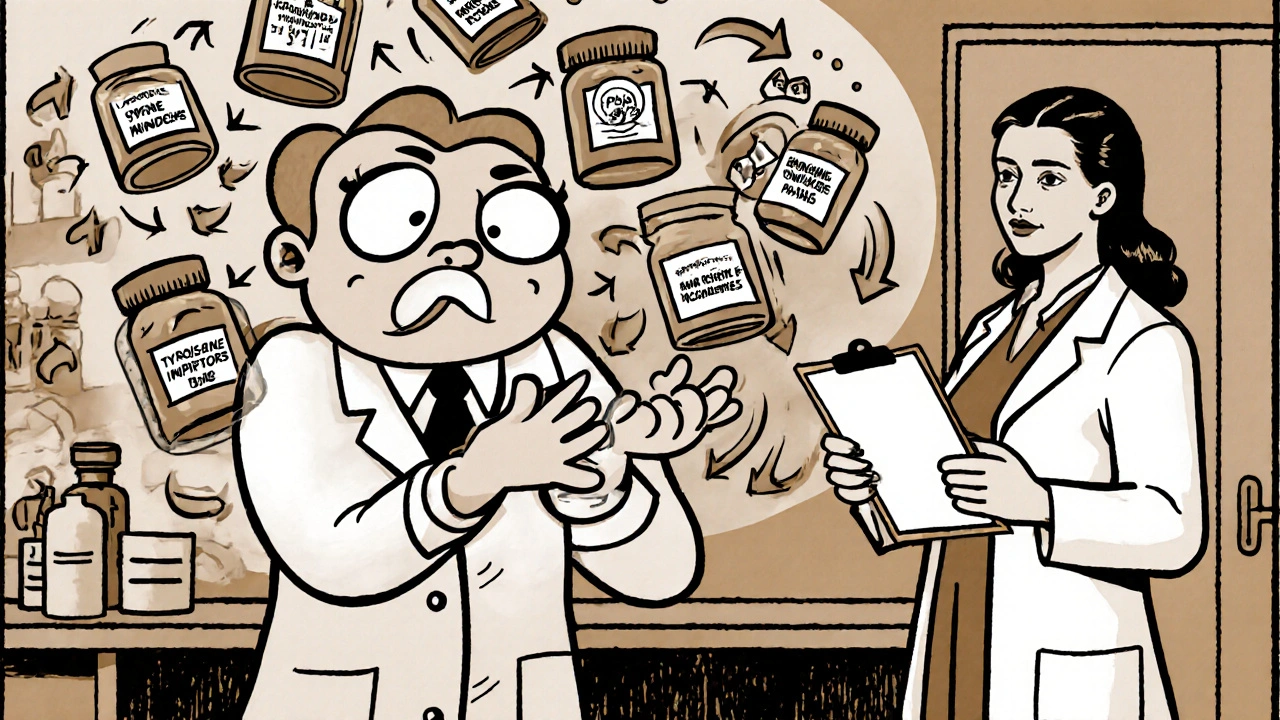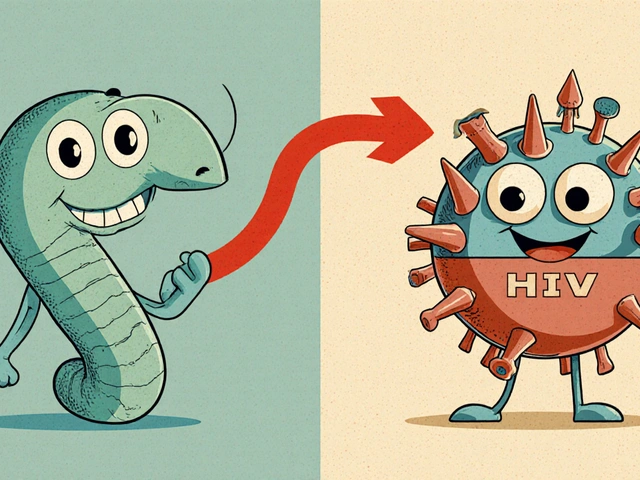Oct
21

- by Gareth Harington
- 1 Comments
When you hear the word fluconazole, most people think of a simple antifungal pill for athlete’s foot or yeast infections. In oncology, however, the drug becomes a lifeline for patients whose immune systems are under siege from chemotherapy or stem‑cell transplants. This guide walks you through what fluconazole does, why it matters for cancer treatment, how to use it safely, and what pitfalls to watch out for.
What Fluorozole Actually Is
Fluconazole is a triazole antifungal that works by inhibiting the fungal enzyme lanosterol 14α‑demethylase, a key step in ergosterol synthesis. Without ergosterol, the fungal cell membrane loses its integrity and the organism can’t grow. First approved by the FDA in 1990, fluconazole quickly became a go‑to oral option for candidiasis, cryptococcal meningitis, and prophylaxis against invasive fungal infections.
Why Cancer Patients Need Antifungal Prophylaxis
Intense chemotherapy, high‑dose steroids, or bone‑marrow transplantation can plunge white‑blood‑cell counts below 500 cells/µL - a state called neutropenia. During neutropenia, the body’s natural defense against fungi disappears, and opportunistic organisms like Candida can invade the bloodstream, leading to life‑threatening sepsis.
Guidelines from the Infectious Diseases Society of America (IDSA) and the European Conference on Infections in Leukemia (ECIL) recommend antifungal prophylaxis for patients expected to have prolonged neutropenia (>7 days). Fluorozole’s once‑daily oral dosing, excellent bioavailability, and relatively mild side‑effect profile make it a favorite for this purpose.
Pharmacokinetics That Matter in Oncology
Fluorozole is absorbed >90 % from the gut, reaches peak plasma concentrations in 1‑2 hours, and has a half‑life of roughly 30 hours, allowing steady‑state levels after 5‑7 days of daily dosing. It distributes well into cerebrospinal fluid, which is why it’s also listed for cryptococcal meningitis in HIV patients.
Crucially, fluorozole is a potent inhibitor of the cytochrome P450 enzyme CYP3A4. In cancer care, many chemotherapeutic agents, hormonal therapies, and supportive drugs are CYP3A4 substrates. Ignoring this interaction can lead to toxic drug levels or, conversely, sub‑therapeutic exposure.
Key Drug Interactions in Cancer Treatment
Below is a quick snapshot of high‑risk combinations you’ll see often in oncology clinics:
- Tyrosine‑kinase inhibitors (TKIs) - e.g., imatinib, erlotinib: Fluorozole can raise plasma concentrations by 30‑50 %, increasing the risk of hepatotoxicity and QT prolongation.
- Hormonal agents - e.g., tamoxifen, aromatase inhibitors: Elevated levels may intensify hot flashes and thrombo‑embolic risk.
- Immunosuppressants - e.g., tacrolimus, cyclosporine: Dose reductions of 50‑70 % are often required.
- Other azoles - e.g., voriconazole, posaconazole: Co‑administration is generally avoided due to additive CYP inhibition.
- Ritonavir‑boosted protease inhibitors (used in HIV‑positive cancer patients): Combined CYP inhibition can push fluorozole levels into the toxic range.
When prescribing fluorozole, always check the patient’s full medication list and adjust doses or monitoring plans accordingly.

Choosing the Right Dose for Different Cancer Scenarios
Dosage isn’t one‑size‑fits‑all. Here’s a practical cheat‑sheet you can keep on the back of a clipboard:
- Standard prophylaxis for neutropenic patients: 400 mg oral once daily, starting 1‑2 days before chemotherapy and continuing until neutrophil recovery.
- Treatment of oropharyngeal candidiasis: 200 mg on day 1, then 100 mg daily for 7‑14 days.
- High‑risk stem‑cell transplant: 400 mg daily for at least 4 weeks post‑transplant, with therapeutic drug monitoring (TDM) if the patient is on CYP3A4‑heavy regimens.
- Renal impairment (eGFR <30 mL/min): Reduce to 200 mg daily; avoid loading dose.
Therapeutic drug monitoring isn’t routine for fluorozole, but it becomes valuable when the patient is on a narrow‑therapeutic‑index chemotherapy (e.g., busulfan).
Side‑Effects You Can’t Ignore
Most patients tolerate fluorozole well, but oncology teams should stay alert for:
- Hepatotoxicity - watch AST/ALT; stop if >5× ULN.
- QT prolongation - especially with TKIs or other QT‑prolonging agents.
- Skin rash or photosensitivity - rare but can mimic drug‑induced erythema.
- Gastro‑intestinal upset - nausea, abdominal pain, usually self‑limited.
If severe, discontinue fluorozole and consider an alternative azole like itraconazole (if the interaction profile fits) or an echinocandin for breakthrough infections.
Comparing Fluorozole With Other Azoles for Oncology Use
| Feature | Fluorozole | Voricozole | Posaconazole |
|---|---|---|---|
| Oral bioavailability | 90‑100 % | 96 % (capsule) / 58 % (IV) | >70 % |
| Half‑life | ≈30 h | ≈6 h | ≈35 h |
| CYP3A4 inhibition | Strong | Very strong | Moderate |
| Spectrum (yeast) | Excellent | Good | Excellent |
| Spectrum (mold) | Limited | Broad | Broad |
| Typical prophylaxis dose | 400 mg daily | 200 mg twice daily | 300 mg daily (tablet) or 300 mg IV q12h |
For patients on multiple CYP3A4‑substrates, fluorozole’s predictable once‑daily schedule often wins out despite its strong inhibition. Voricozole shines when you need mold coverage, like in hematopoietic stem‑cell transplant recipients with prolonged neutropenia. Posaconazole is the go‑to for refractory infections but can be pricey and requires a high‑fat meal for optimal absorption.

Emerging Research: Fluorozole as an Anticancer Agent
Beyond its antifungal duties, lab studies suggest fluorozole may interfere with cancer cell metabolism. In vitro, fluorozole inhibited the growth of certain breast‑cancer lines by targeting the sterol‑regulating enzyme HMG‑CoA reductase, a pathway also hit by statins. Small‑scale phase‑I trials have examined high‑dose fluorozole (up to 800 mg daily) as an adjunct to standard chemotherapy for pancreatic cancer, reporting modest tumor‑size reductions with manageable toxicity.
These findings are promising but far from practice‑changing. Until larger randomized trials confirm benefit, fluorozole’s primary role remains infection prevention, not direct tumor control.
Practical Checklist for Oncology Teams
- Identify patients at risk: prolonged neutropenia, steroid use, stem‑cell transplant.
- Confirm baseline liver function and QT interval before starting.
- Review all concurrent meds for CYP3A4 substrates; adjust doses or plan monitoring.
- Start prophylaxis 24‑48 h before chemotherapy; continue until neutrophil count >500 µL for two consecutive days.
- Re‑assess renal function weekly; reduce dose if eGFR <30 mL/min.
- Document any side‑effects; stop fluorozole if liver enzymes rise >5× ULN or QTc >500 ms.
- Consider therapeutic drug monitoring when fluorozole is combined with narrow‑therapeutic‑index agents.
- Educate patients on adherence - missing doses can lead to breakthrough candidiasis.
Frequently Asked Questions
Can fluorozole be given intravenously?
Yes, there is an IV formulation (40 mg/mL) for patients who cannot swallow pills or who need rapid serum levels, such as during severe systemic infections.
What is the safest way to monitor for drug interactions?
Use a pharmacy‑managed medication review, check the patient’s CYP3A4 substrate list, and order baseline liver enzymes and ECG. Repeat labs every 1‑2 weeks during prophylaxis.
Should fluorozole be stopped before surgery?
Not usually. Because its half‑life is long, stopping briefly would not reduce infection risk. Only pause if the patient will receive strong CYP3A4‑inducing anesthetics that could lower fluorozole levels.
Is fluorozole safe during pregnancy for women undergoing cancer therapy?
Animal data show no teratogenic effect, but human data are limited. The decision balances infection risk versus unknown fetal risk; most oncologists prefer an alternative azole if the pregnancy is early.
Can fluorozole cause resistance in Candida species?
Yes, prolonged prophylaxis can select for fluorozole‑resistant strains, especially Candida glabrata. Rotate to an echinocandin if breakthrough infection occurs.
Next Steps for Clinicians
If you’re starting a new oncology protocol, add fluorozole prophylaxis to the order set, embed a reminder to check liver enzymes, and flag any CYP3A4‑heavy agents for dose adjustment. For patients already on fluorozole, schedule a medication‑review every 30 days and document any side‑effects in the electronic health record.
Remember, fluorozole is a powerful tool in the cancer‑care toolbox-but only when it’s paired with vigilant monitoring and a clear understanding of its interaction landscape. Use it wisely, and you’ll help keep infections at bay while your patients focus on beating the tumor.






1 Comments
Jasmina Redzepovic
Fluconazole's pharmacodynamics are a textbook case of CYP3A4 inhibition, which, as any seasoned oncologist will attest, demands meticulous dose titration of concurrent chemotherapeutics. The drug's half-life, hovering around thirty hours, ensures steady-state concentrations but simultaneously raises the specter of accumulation when paired with azole-sensitive agents. In neutropenic prophylaxis, the once-daily 400 mg regimen simplifies adherence, yet the systemic exposure magnifies the risk of hepatotoxicity, especially when co-administered with tyrosine‑kinase inhibitors. The literature underscores a 30‑50% increase in plasma levels of erlotinib, mandating either dose reduction or intensified LFT monitoring. Moreover, fluconazole's propensity to prolong the QT interval cannot be downplayed; when patients are already on drugs like vandetanib, the additive effect may precipitate torsades de pointes. Renal impairment further complicates the picture: an eGFR below 30 mL/min calls for a dose reduction to 200 mg daily, lest we overflow the system with unmetabolized metabolites. That said, the drug's oral bioavailability exceeds 90%, circumventing the need for intravenous access in most outpatient settings, which aligns with cost‑containment strategies. Nevertheless, one must remain vigilant about drug‑drug interactions with immunosuppressants; tacrolimus levels can double, necessitating a 50‑70% dose cutback. The risk of selecting for fluconazole‑resistant Candida, particularly C. glabrata, underscores the importance of stewardship programs and periodic susceptibility testing. Prophylactic use in stem‑cell transplant recipients is justified, but only when the risk‑benefit analysis accounts for the extended half-life that may interfere with graft‑versus‑host disease prophylaxis. Therapeutic drug monitoring, while not routinely performed, becomes indispensable when fluconazole is stacked with narrow‑therapeutic‑index agents like busulfan. The interaction matrix also expands to hormonal therapies; tamoxifen's metabolite profile can shift, aggravating hot flashes and thrombotic tendencies. Institutions should embed alerts in electronic prescribing systems to flag CYP3A4 substrates, thereby preempting inadvertent overdoses. Ultimately, fluconazole remains a cornerstone of antifungal prophylaxis in oncology, but its deployment must be guided by a robust pharmacovigilance framework that balances efficacy with safety.
Write a comment